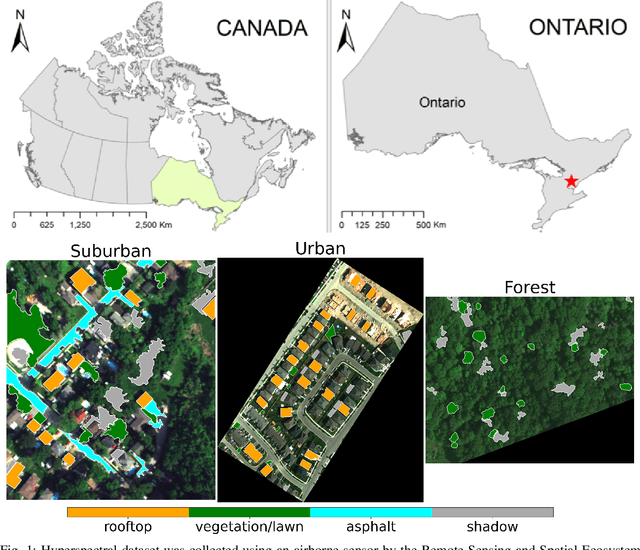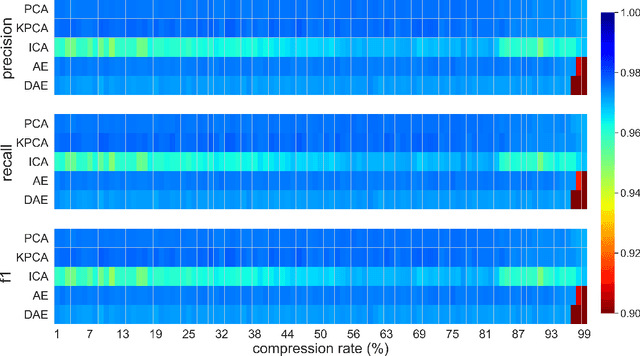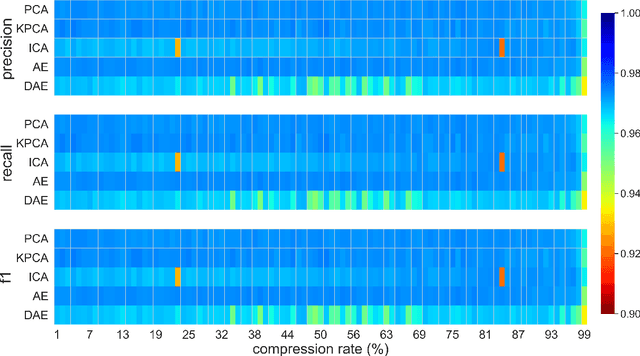A study on the effects of compression on hyperspectral image classification
Paper and Code
Apr 01, 2021



This paper presents a systematic study the effects of compression on hyperspectral pixel classification task. We use five dimensionality reduction methods -- PCA, KPCA, ICA, AE, and DAE -- to compress 301-dimensional hyperspectral pixels. Compressed pixels are subsequently used to perform pixel-based classifications. Pixel classification accuracies together with compression method, compression rates, and reconstruction errors provide a new lens to study the suitability of a compression method for the task of pixel-based classification. We use three high-resolution hyperspectral image datasets, representing three common landscape units (i.e. urban, transitional suburban, and forests) collected by the Remote Sensing and Spatial Ecosystem Modeling laboratory of the University of Toronto. We found that PCA, KPCA, and ICA post greater signal reconstruction capability; however, when compression rate is more than 90\% those methods showed lower classification scores. AE and DAE methods post better classification accuracy at 95\% compression rate, however decreasing again at 97\%, suggesting a sweet-spot at the 95\% mark. Our results demonstrate that the choice of a compression method with the compression rate are important considerations when designing a hyperspectral image classification pipeline.
 Add to Chrome
Add to Chrome Add to Firefox
Add to Firefox Add to Edge
Add to Edge